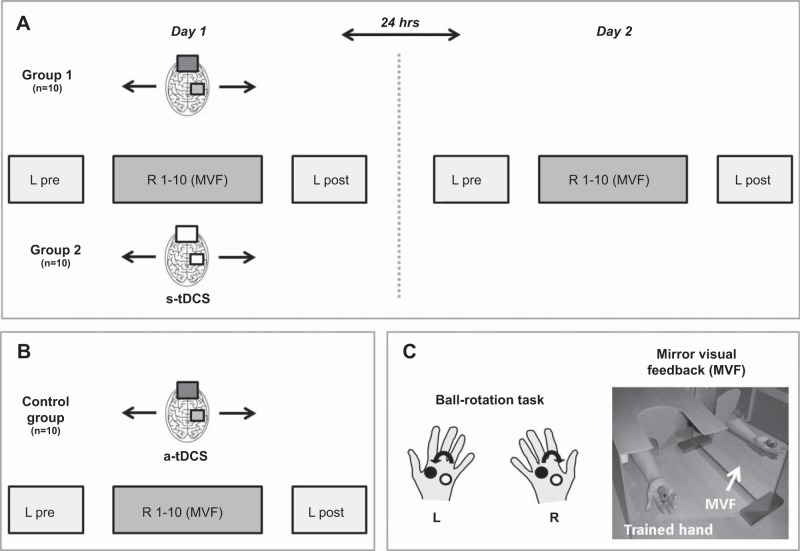Fig. 1.
Experimental setup and design. A: participants performed a complex ball-rotation task on two consecutive days (day 1 and day 2). On day 1, participants performed the task first with the left (untrained) hand (L pre) in counterclockwise orientation. Subsequently, the right (trained) hand performed the task for 10 consecutive trials (R1–10) in clockwise orientation while watching the movements of the performing hand in a mirror [mirror visual feedback (MVF), see C]. Total duration of MVF training was 20 min. During MVF, participants either received anodal transcranial direct current stimulation (a-tDCS) or sham stimulation (s-tDCS) over right primary motor cortex (M1). At the end of the training period, the left (untrained) hand was reevaluated in counterclockwise orientation (L post). On day 2 the ball-rotation task was performed again under the exact experimental conditions as on day 1 but without tDCS. B: control experiment. The experimental setup and design was comparable to A. However, participants received no MVF (without MVF) during 20 min of a-tDCS while the right hand was trained for 10 consecutive trials (R1–10). Here, participants were instructed to watch the left stationary hand while the right hand was covered with a box. C: illustration of the ball-rotation task. The left hand (L) was supposed to rotate the balls in counterclockwise orientation. Training of the right hand (R) was performed in clockwise orientation. During training, the right hand was always covered with a box. Groups 1 and 2 received MVF and a-tDCS or s-tDCS during training of the right hand, whereas the control group had to perform the task without MVF but with a-tDCS. See text for details.

